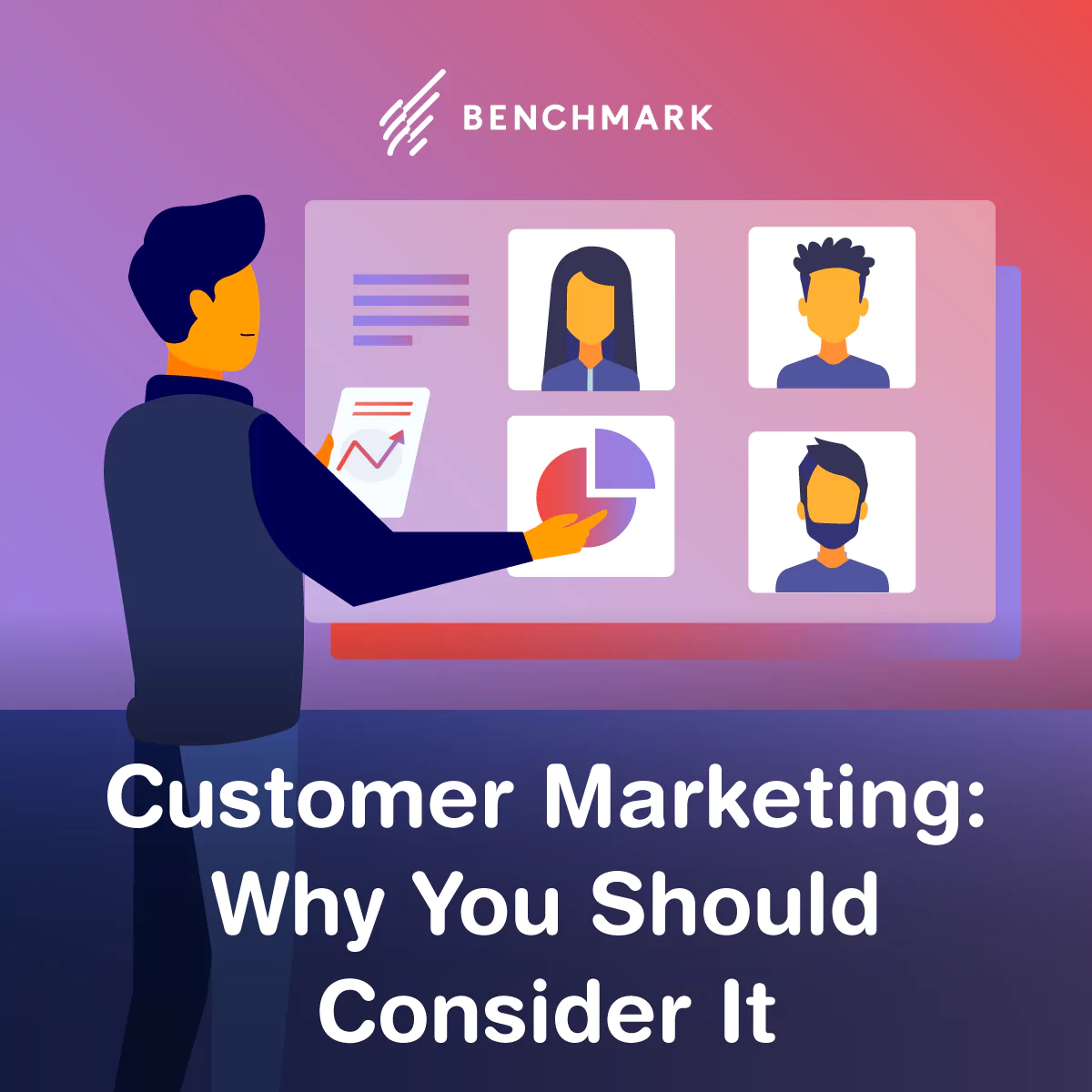
If you want to sell more, start by looking at your existing customers. According to HubSpot’s 2020 State of Marketing Report, a little more than 60% of marketers report that they’re doing some sort of customer marketing — and for 70% of them, the tactic has been at least “moderately effective” in its purpose.
Customer marketing is nothing new, even if you’re just hearing the term for the first time. However, what’s changed is that companies now have a lot more data available to help them do it right. In this post, we’re breaking down customer marketing basics, including what it is, what it can help you achieve, and why you should consider making it part of your marketing strategy.

What Is Customer Marketing?
Customer marketing is a marketing tactic directed toward your existing customer base. Instead of focusing efforts toward the acquisition of and nurturing new leads, customer marketing goes to work engaging current customers to promote additional products and services, build customer loyalty, and stay top of mind. And this can have big advantages for your business’s bottom line.
In the U.S., companies lose $136.8 billion every year to avoidable customer churn. Customer marketing doesn’t guarantee that your customers won’t switch to the competition, but it does make it less likely. By putting time and resources into improving the experience and increasing the purchase potential of existing customers, your business can retain more of its client base and help make that base more profitable.
You might be engaging in customer marketing practices without quite naming them as such. Or you might be neglecting to market to your customers at all and losing out as a result. Either way now is the time to switch gears. Here are some ways to do it.
Effective Customer Marketing Tactics
Every customer relationship that you currently have is an opportunity to boost your sales. Whether through selling to current customers or turning your customer base into advocates that go on to help bring in more leads, customer marketing is a strategy with a whole lot to offer if it’s done right. Try out one or more of the tactics below to start putting it to work for your business.
Exclusive Content
The buyer’s journey doesn’t end at purchase. And just like leads in earlier stages, customers have their own unique set of questions and challenges that can be addressed through targeted content.
Creating exclusive content for customers is the most common customer marketing tactic for brands. This includes things like personalized how-to guides, training videos, and tips on how they can get the most out of their purchase — all of it driven to enhance the customer experience and ensure they get the most out of their product or service.
Customer Spotlights
Giving your customers a voice is a great way to build brand loyalty and a sense of community. To do it, start sharing user-generated content on your marketing channels, including testimonials and social media posts featuring your product. In addition to being a useful customer marketing tactic, this also helps with your bottom-funnel marketing, since there’s nothing like peer-to-peer marketing for lending authority to your brand.
Make It Personal
Show your customers you care with personalized offers, swag, and events. Not only does this help you stay on their mind, but it also highlights that you value the relationship and are willing to invest in it.
Brand loyalty is something that you have to earn. Email personalization shows your customers that they’re more than just an order number to you, and can be integral to establishing those core bonds that keep your customers coming around.
Measure Your Customer Marketing Effectiveness
Just as important as engaging in customer marketing in the first place is making sure that you know if it’s succeeding. So what metrics should you be looking at? Start with these.
Customer churn rate. The best way to know if you’re successfully marketing to your existing customer base is to look at how many you’re retaining over time. Choose a time period (such as a month, a quarter, or a year) and divide the number of customers you lost by your total number of customers. The lower the churn rate, the better you’re doing.
Net promoter score. The net promoter score (NPS) tells you how likely your customers are to recommend your product or service to others. If you’re providing a great experience through customer marketing, this number will be, on average, closer to 10 than 1.
Monthly recurring revenue. A big part of customer marketing is getting your customers to continue buying over time. To see if it’s working, track the monthly recurring revenue for each customer and compare it over the course of your relationship to see if they’re still spending month after month, as well as if they’re spending more.
As with any marketing initiative, stick with what works. Try out various customer marketing tactics, measure their performance and outcomes, and capitalize on your best practices. You’ll have happier customers, plus the added benefit of knowing that you can get more value out of every customer you bring on board.



